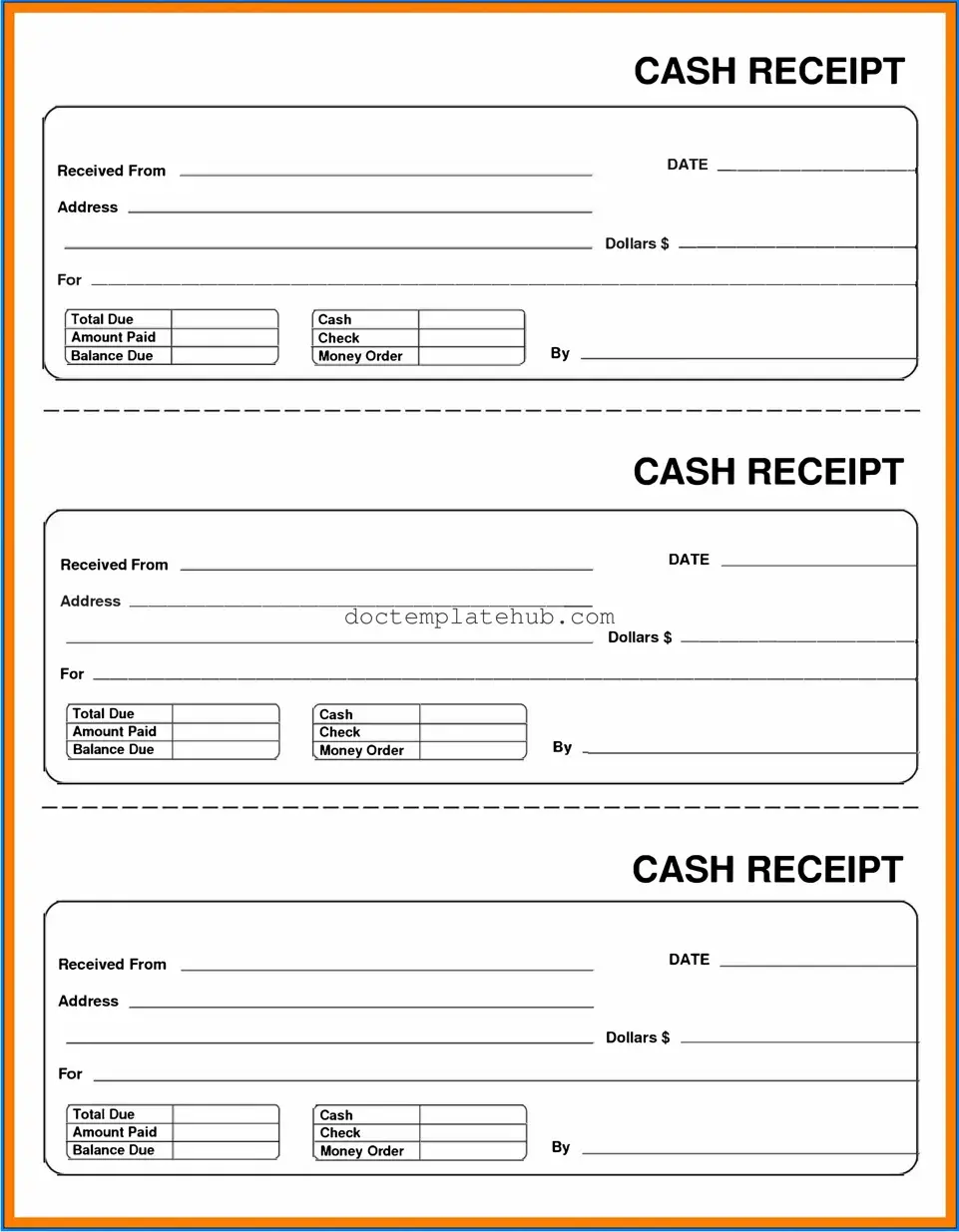What is a Cash Receipt form?
A Cash Receipt form is a document used to record the receipt of cash payments. It serves as proof of payment for transactions, providing both the payer and the payee with a record of the amount received, the date of the transaction, and the purpose of the payment. This form is essential for maintaining accurate financial records.
Who should use a Cash Receipt form?
Any individual or organization that receives cash payments should use a Cash Receipt form. This includes businesses, non-profits, and freelancers. By using this form, parties can ensure transparency and accountability in their financial dealings.
What information is typically included on a Cash Receipt form?
A Cash Receipt form usually includes the following information: the date of the transaction, the name of the payer, the amount received, the purpose of the payment, and the signature of the person receiving the cash. Additional details, such as the method of payment (e.g., cash, check), may also be included.
Why is it important to keep a copy of the Cash Receipt form?
Keeping a copy of the Cash Receipt form is crucial for record-keeping and accounting purposes. It helps in tracking income, verifying transactions during audits, and resolving any disputes that may arise regarding payments. Both the payer and the payee should retain their copies for future reference.
Can a Cash Receipt form be used for electronic payments?
While a Cash Receipt form is primarily designed for cash transactions, it can also be adapted for electronic payments. In such cases, the form should indicate the method of payment, such as credit card or bank transfer, along with relevant transaction details to maintain accurate records.
Is there a specific format for a Cash Receipt form?
There is no universally mandated format for a Cash Receipt form. However, it should clearly present the necessary information in a structured manner. Organizations may choose to create their own templates or use standardized forms available online, ensuring all essential details are included.
How can I ensure that my Cash Receipt form is legally valid?
To ensure the legal validity of a Cash Receipt form, it should be completed accurately and signed by both the payer and the receiver. Including specific details about the transaction and maintaining copies for both parties also contributes to its validity. Consulting with a financial advisor or accountant can provide additional guidance.
What should I do if I lose my Cash Receipt form?
If a Cash Receipt form is lost, it is advisable to recreate the form with as much detail as possible. This includes the date of the transaction, the amount, and the purpose of the payment. If possible, obtain confirmation from the payer regarding the transaction. Keeping thorough records can help prevent issues related to lost documentation in the future.
